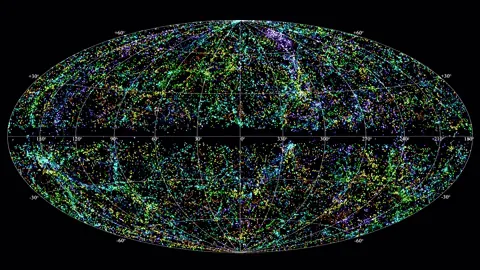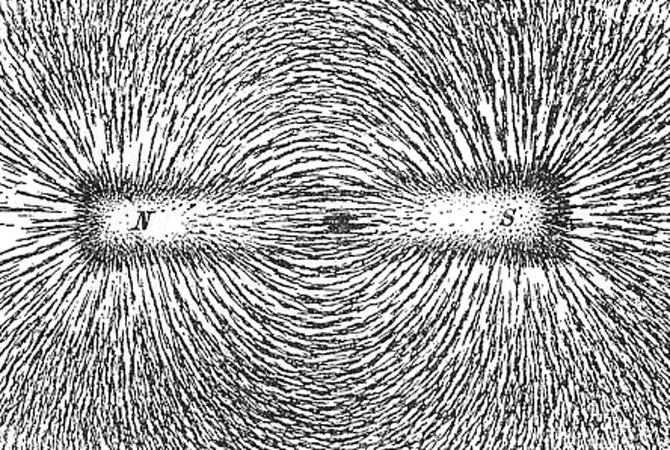
Astronomers Unravel the Mystery of Fast Radio Bursts: Are Massive Galaxies the Key?
2024-11-15
Author: Rajesh
Astronomers Unravel the Mystery of Fast Radio Bursts: Are Massive Galaxies the Key?
Every day, the cosmos dances with thousands of elusive flashes of energy known as fast radio bursts (FRBs), which unleash as much energy in mere milliseconds as our sun does over an entire day. These cosmic enigmas, invisible to the naked eye, have perplexed scientists for years as they struggled to observe and understand their origins and causes.
Recent groundbreaking research led by Kritti Sharma at the California Institute of Technology has shed new light on these mysterious signals. The team suggests that FRBs are predominantly linked to colossal, star-forming galaxies and are thought to erupt due to the powerful remnants of long-extinct stars called magnetars. This revelation not only helps to clarify the formation of these energetic eruptions but also proposes a new scenario for how magnetars themselves come into existence.
“Very little is known about what causes the formation of magnetars upon the death of massive stars,” Sharma revealed in a news release. “Our work helps to answer this question.”
By scrutinizing the host galaxies of 30 FRBs detected by California's Deep Synoptic Array-110, the researchers concluded that these bursts are predominantly found in substantial galaxies brimming with "metals"—an astronomical term for any element heavier than hydrogen or helium. The presence of metal-rich environments appears to play a significant role in the formation of magnetars, the prime candidates responsible for generating FRBs.
The study, published on November 6 in the prestigious journal Nature, proposes that magnetars are not merely remnants of massive stars collapsing under their own gravity but are likely born from explosive stellar collisions. In metal-rich stellar environments, certain stars, often found in pairs, tend to slow down their collapse over time, which allows one star to accumulate mass from its companion. This rejuvenation process leads to intensely amplified magnetic fields, transforming the larger star into a magnetar—an entity possessing magnetic strength hundreds of trillions of times greater than Earth's.
Interestingly, the proposed mechanism could also elucidate why FRBs are sometimes detected in regions populated with older stars. In these scenarios, the longevity of binary star systems could account for the persistence of magnetars well beyond the life cycle of typical, isolated stars.
Yet, numerous questions surrounding FRBs remain unanswered. One of the most intriguing mysteries is why a select few seem to surge with activity multiple times a day, while others only emit a single burst. As Ayush Pandhi from the University of Toronto noted, “We have no idea what's causing them. It's one of the big mysteries in astronomy right now.”
As astronomers continue to chase these fleeting bursts across the vast universe, the hope is to unveil not just the origins of FRBs but also the deeper mechanics of our cosmic neighborhood. The quest for answers is just beginning, and the implications could reshape our understanding of the universe. Stay tuned—who knows what other astounding revelations await us in the stellar symphony above!




 Brasil (PT)
Brasil (PT)
 Canada (EN)
Canada (EN)
 Chile (ES)
Chile (ES)
 España (ES)
España (ES)
 France (FR)
France (FR)
 Hong Kong (EN)
Hong Kong (EN)
 Italia (IT)
Italia (IT)
 日本 (JA)
日本 (JA)
 Magyarország (HU)
Magyarország (HU)
 Norge (NO)
Norge (NO)
 Polska (PL)
Polska (PL)
 Schweiz (DE)
Schweiz (DE)
 Singapore (EN)
Singapore (EN)
 Sverige (SV)
Sverige (SV)
 Suomi (FI)
Suomi (FI)
 Türkiye (TR)
Türkiye (TR)